Recently I’ve been on the lookout for a new way to organize and display my rock and mineral collection. Right now, I have them scattered all over the house on different shelves, tucked in between potted plants and on tops of book stacks. I was scrolling on Pinterest one day for ideas, and immediately fell in love with the idea of using an old printer’s tray as a display shelf. There are tons of antique and vintage shops in my area and most of the furniture and home decor in my house is secondhand.
So, I made my rounds to the antique shops I frequent. The first place I was so confident I would find one - multiple actually - but they only had one and it wasn’t quite what I was looking for (a little too small and in need of a lot of TLC). The next day, I walk into another one of my favorite shops, and the first thing I see is a stack of printers trays on the floor by the entrance! They didn’t have prices on them yet, so I asked the shopkeeper ($30) and excitedly told him how I had just been on the hunt for these to display my rock collection - and he said that they had just been delivered 10 minutes before I walked in. It appears the thrift/antique gods were happily looking down on me that day. 🤩
Here it is in my living room/office area where I’ll probably display it. Now I just have to figure out where to put it…I’ll be sure to update as I set it up. 😊
🧚♀️A magical book barn
Speaking of secondhand shops, a few weekends ago I met my friend at a book barn in rural upstate New York where I live. There’s something almost magical about this place - every time I go, I find multiple things I didn’t even know I wanted or was looking for. This time, I found a few gifts for recent birthdays, along with a geology ‘coffee table’ book called Outcroppings. The cool thing is that it wasn’t even in the ‘Geology’ section (which is painfully small and hidden in a small corner where you have to bend down to see it).

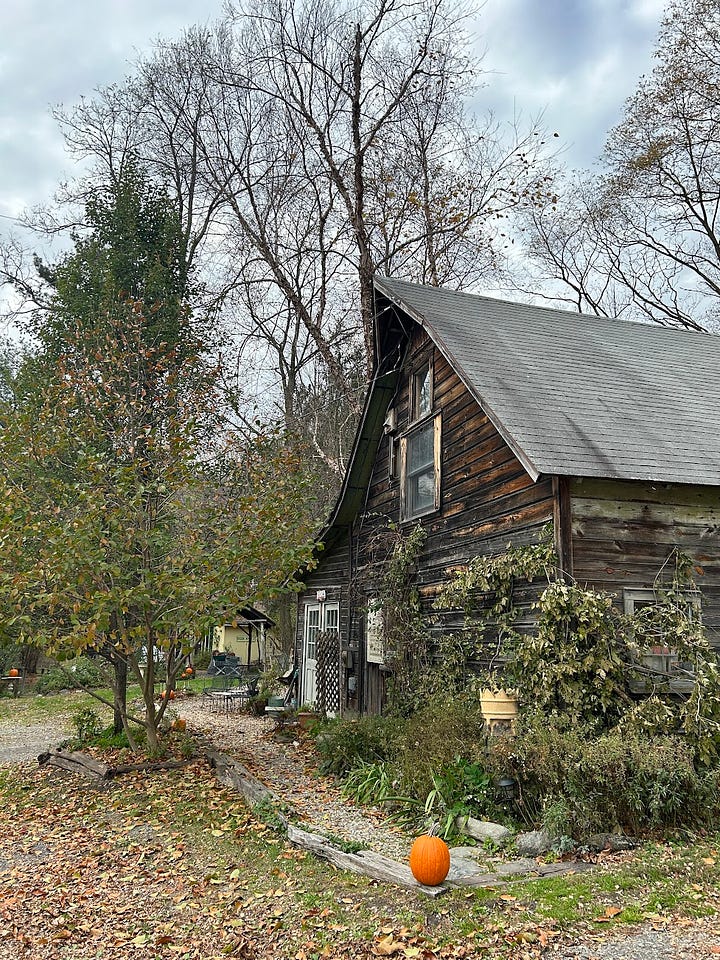
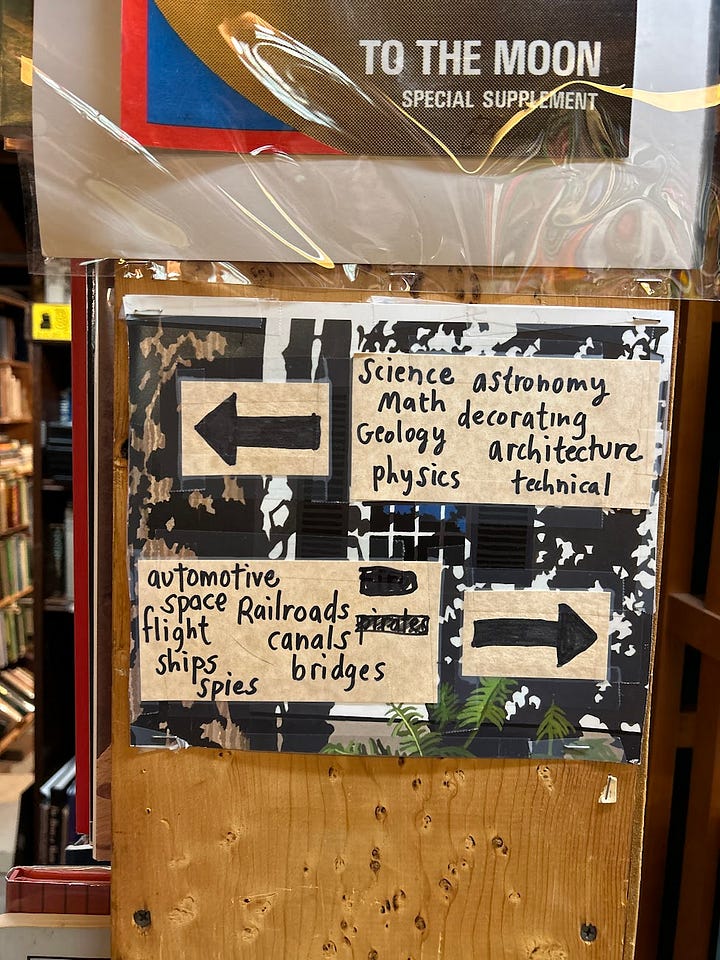
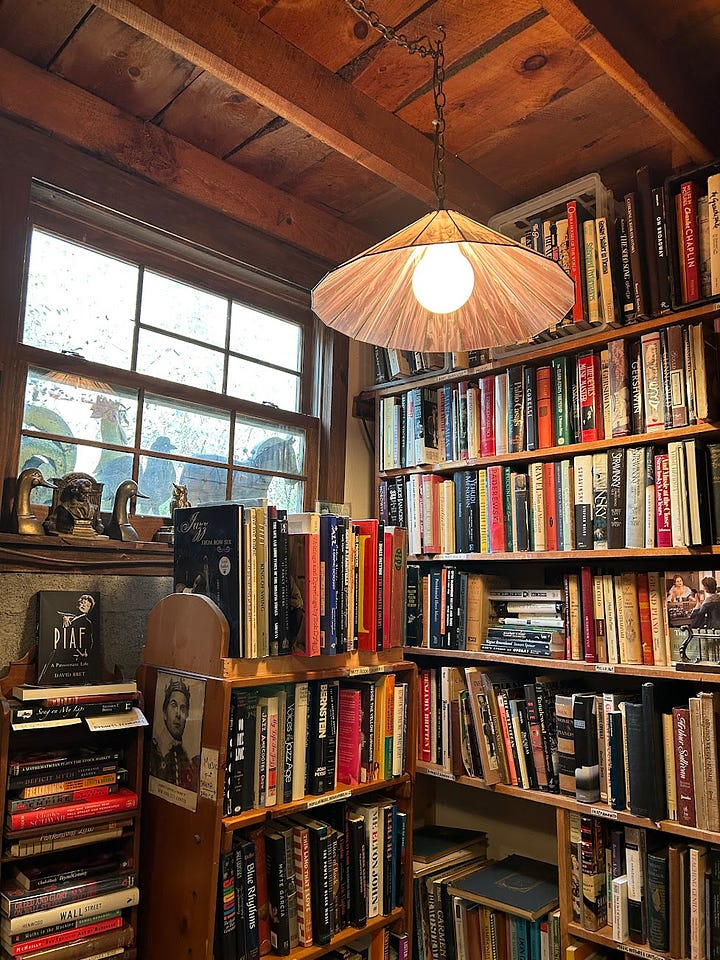
It was propped up randomly on a little shelf that I saw as I made my way downstairs from the attic room. I just so happened to glance the name of the author, John McPhee, and immediately whispered ‘ooh’ the same way I do when I see a cool rock, before sitting on the top step to open it up and take a look.
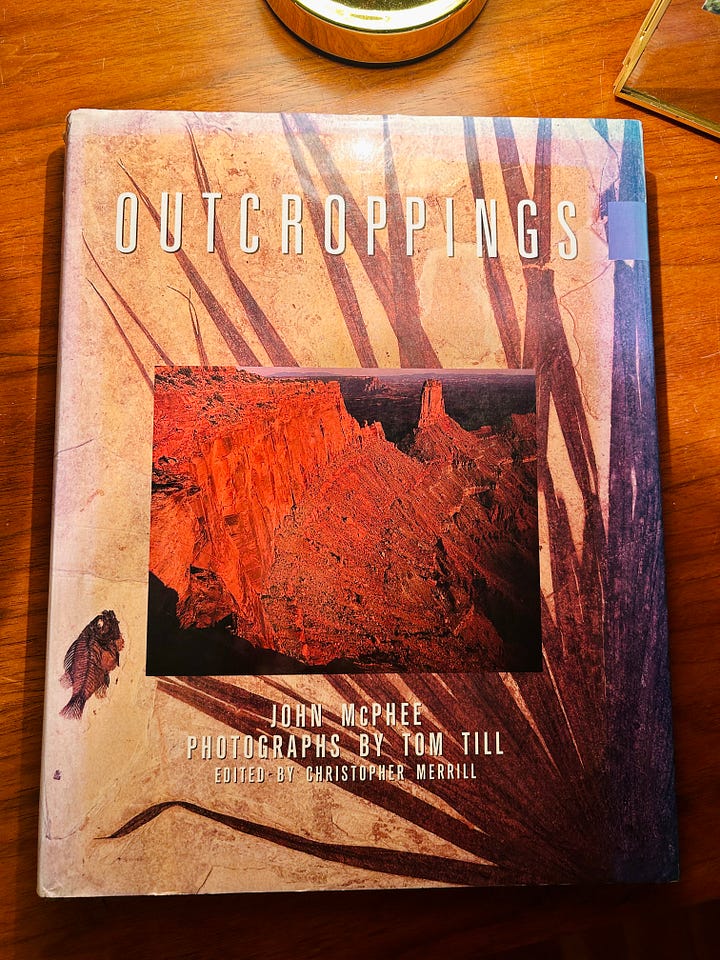
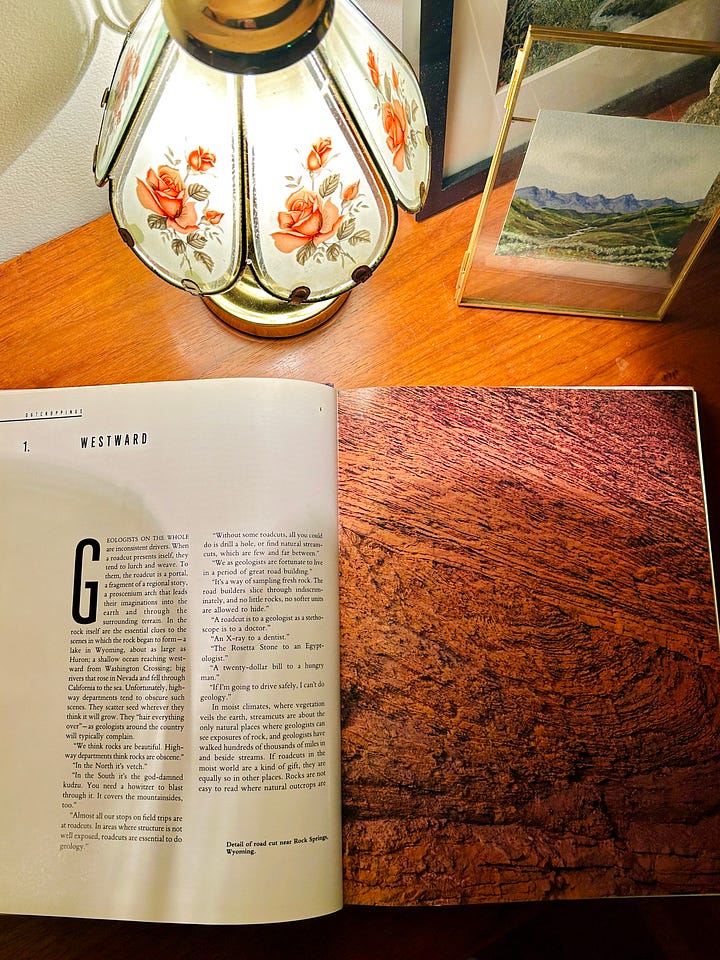
John McPhee is a very well known creative nonfiction author who has written several books in layman’s terms about the geology of the Western US. I had a professor in college who loved and recommended his books, but until now I hadn’t yet read one. I’ve wanted to, but to be honest with you I was a little intimidated by how thick the books are when I pick them up and always say “I’ll read it later” and never do. 😅
Well, after starting to read this book, I know that I have to go buy some of his others because his writing is wonderful. He really brings the magic of geology alive, and makes you see what hes describing in perfect detail while not overwhelming you. Here’s a few passages I enjoyed from the first chapter, which in the book are paired with beautiful photos:
“Geologists on the whole are inconsistent drivers. When a roadcut presents itself, they tend to lurch and weave. To them, the roadcut is a portal, a fragment of a regional story, a proscenium arch that leads their imaginations into the earth and through the surrounding terrain.”
This one made me laugh when I read it - it’s a commonly told joke that geologists are terrible drivers because we’re always getting distracted by the rocks on the side of the road. And it’s true - roadcuts really are portals to us geologists! The exposed bedrock, blasted or cut away to make roads and highways, are a valuable peek into the ancient past of a region’s natural history. Especially here in the Northeastern US where soil and trees and plants cover up most of the bedrock like a thick blanket.
“Undeniably though, the West is where the rocks are- ‘where it all hangs out,’ as someone in the United States Geological Survey has put it - and of Eastern geologists who do any kind of summer field work, about seventy-five per cent go West.”
This is the exact reason why I went to geology field camp in Wyoming to finish the last 6 credits of my geology degree. I grew up in New York and got my geology degree at a New York college, so when I went out west for this last course, I was in heaven. It was crazy how easily I could walk across an expanse of land and see the changes from one rock formation to another - the color of the soil and which plants grew in it, the fossils scattered over the ground, and of course the rocks themselves. I remember being in awe watching the shadows of clouds move across the landscape in real time, a scene I’d rarely witnessed back east. We could see storms approaching in the distance way before the first drops of rain fell, even as vast expanses of blue sky surrounded us in every other direction.
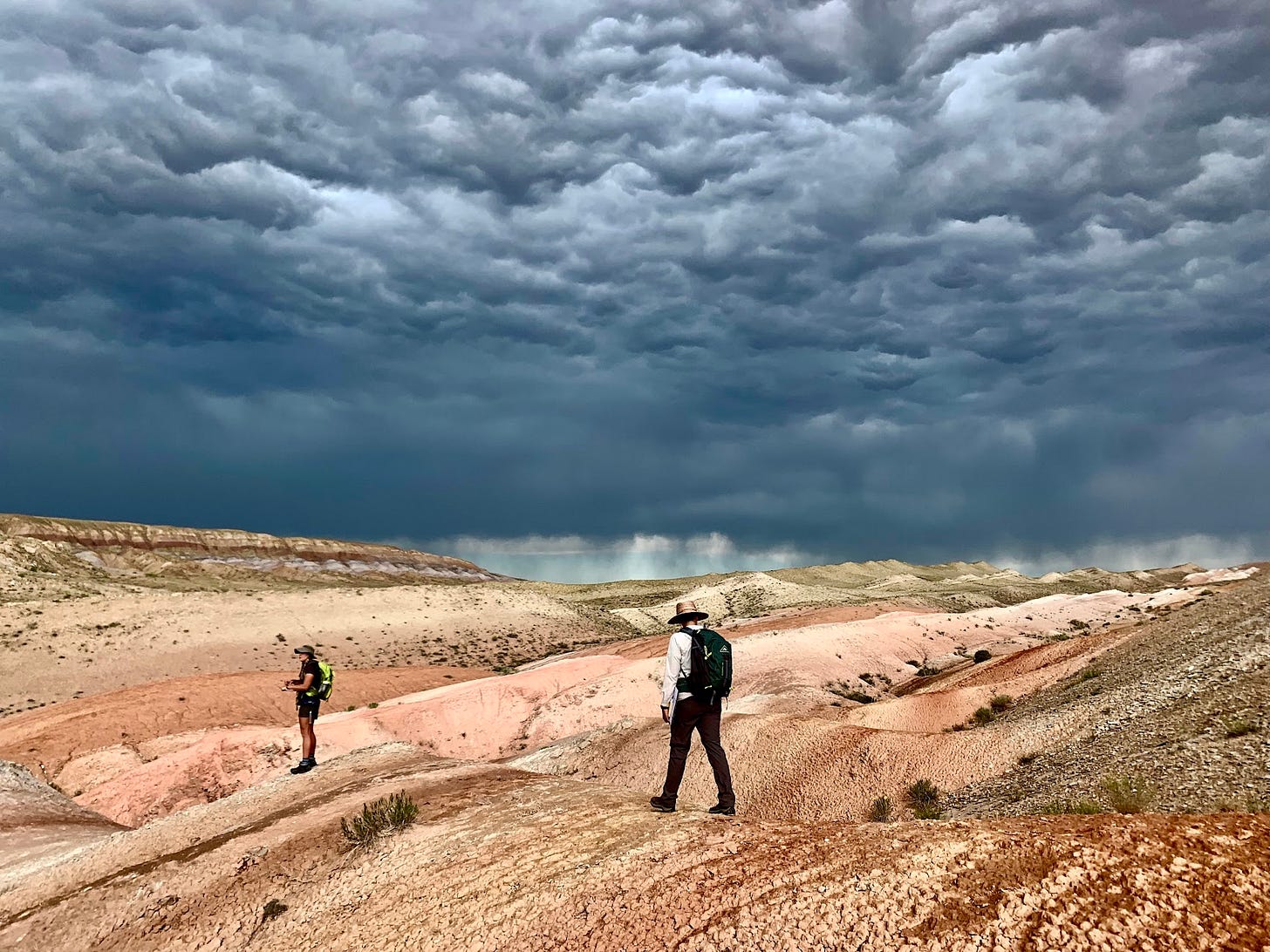
Watch this video to see what I mean about the clouds:
“There are mountains now behind you, mountains before you, mountains that are set on top of mountains… at the conclusion of which, through another canyon, you come into the Basin and Range.”
“And with Nevada these high, discrete, austere new ranges begin to come in waves, range after range after north-south range, consistently in rhythm with wide flat valleys: basin, range; basin, range; a mile of height between basin and range.”
I went to Nevada this past spring for the first time, and I drove across virtually the entire state west to east. I was hired to go on this trip by Travel Nevada, one of my first ‘real’ gigs as a full time science communicator and content creator. They set up a whole itinerary for me to travel from small town to small town, stopping at several of the state’s best designated rockhounding sites. At first, I was nervous to drive across an entire state in a car that isn’t mine, with virtually no cell service in between towns (luckily I wasn’t alone though, I had my wonderful cousin and friend as my copilot), but I actually loved it. It really did feel like we were driving over waves and waves of mountains - basin, range, basin, range, basin range - that endless pattern so tangibly visible in front of us and behind us.
The Basin and Range province spreads across multiple states and into Mexico, and is the result of the stretching of Earth’s crust. Through this stretching, many faults were created that caused blocks of earth to fall in between each other - creating mountain ranges with lower basins between them.

I had learned about the Basin and Range province in my classes, but experiencing it - literally driving through it - was an incredibly cool thing.
💩Kids love dino poop
Last week, I visited a 3rd grade class to talk about rocks. I brought in my own case of rock and mineral samples to share with them, and many of them even brought samples from their own collections.

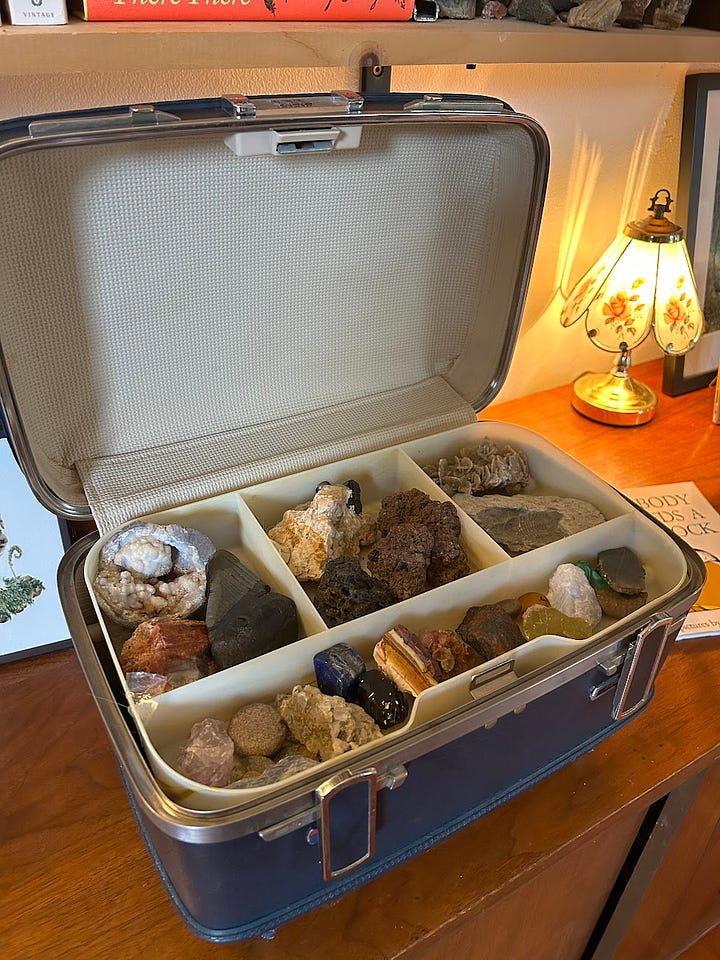
We sat in a circle as I showed them my collection and shared the stories that they told of different times and events in our planet’s ancient past. They especially loved, and were disgusted by, the coprolite (dinosaur poop) that I brought in…
They were incredibly cute and had so many great questions - and I was so happy to see so many of them already with their own collections and curiosity for our planet. One munchkin came up to me at the end and said “I want to be a geologist when I grow up, just like you!” and gave me a huge hug. 🥹
✏️ Join me in the comments!
Please answer any/all questions in the comments, or just add your own thoughts.
Do you have a rock collection, and if so do you have a specific way of displaying it?
What’s a place that, when you visited for the first time, you were surprised at how much you loved it?
Tell me about a nonfiction book or author that you love!
What’s the best thing you’ve ever found a a thrift store/antique shop?




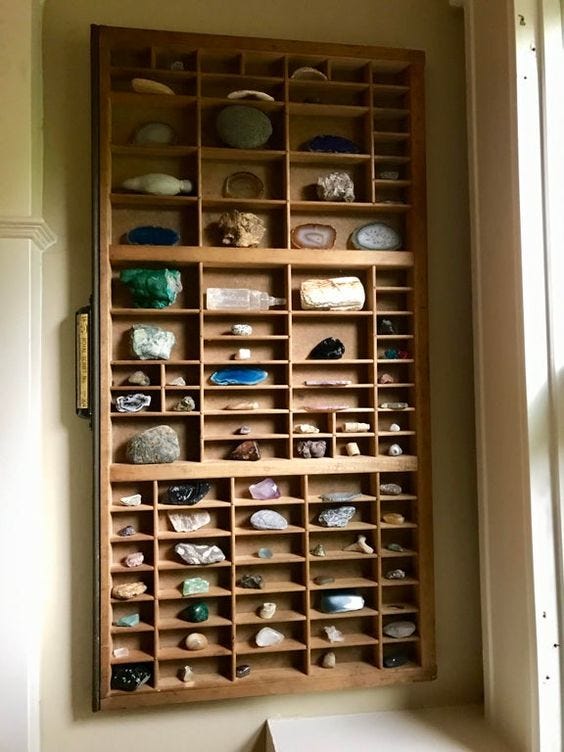
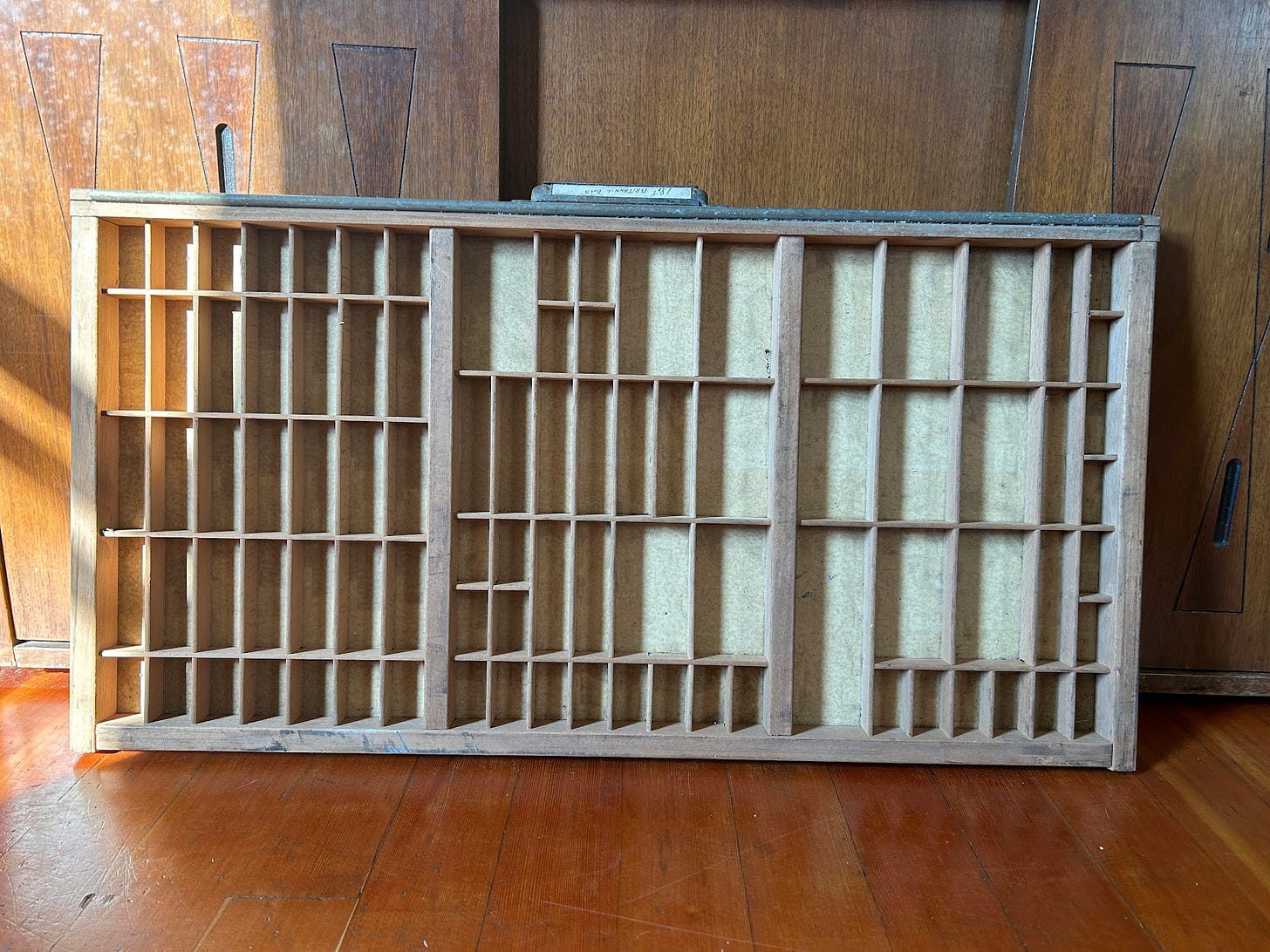




This is a knockout of a first newsletter, already looking forward to the next one!
I’m not a geologist or even geology-adjacent, but I got excited when you mentioned John McPhee — his “Annals of the Former World” is one of the most mind-blowing things I’ve ever read. Someday I hope to drive across the country on I-80 to see everything he describes.
I wanted to find a good nonfiction book to recommend in turn, but I couldn’t pick just one, so here’s a link to the page on my website where I list everything I’ve read and enjoyed for the past 6 years: https://jordankoschei.com/reading/
wooooooo! you did it! :)
I am actually interested in the development of this rock display. I currently have mine in this old jewellery box which sits on its side, like a display case. But I really want to have labels etc because I feel like I'm gonna keep collecting and stop remembering which rock is from where, etc.
My best friend's dad is a geologist and she will definitely testify to the car constantly being pulled over on family trips!